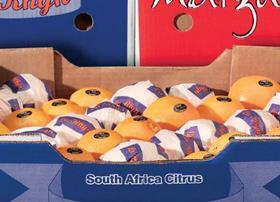
'The trees are in the ground and the fruit will be picked', as the saying goes, and during the next three to five years, citrus exports from South Africa will increase from 2m tonnes to 2.5m tonnes.
This additional 500,000 tonnes could offer the industry a great opportunity or, alternatively, spell disaster.
This is the view of the Citrus Growers’ Association (CGA) which wrote to growers on this very subject. Clearly the reality of the growth the industry is currently experiencing is beginning to sink in.
The CGA said that if all role-players work together, and work hard, this extra volume will result in additional jobs, a growing industry, rural development, and additional investment and foreign exchange earnings.
“In broad terms there are two essential elements for a successful growth path,' the group stated. 'Attention must be given to the logistics infrastructure and equipment so as to get the additional volume to the port for loading, through the port, and to the final destination. The second element is the opening up of new markets for Southern African citrus, the retaining of markets the country is now trading with and to optimise market access conditions.
“When faced with investment decisions in the past the South African government has tended to pour money into its loss-making national airline carrier, while ignoring investments in its money making port state owned enterprise,” the CGA continued. “As a result Durban port, which handles the bulk of southern African citrus, is creaking. The infrastructure is badly in need of an upgrade, and new equipment is sorely needed. In addition, the port operations lag international norms in terms of port efficiency.”
The CGA said that one of the items in its six-point plan is to improve efficiency of the port.
“The other elements include making greater use of Maputo port, increasing the volume transported to Durban by rail, increasing capacity of cold stores in the Durban port precinct, as well as investment in hubs where cargo can be accumulated and railed into the port, and the use of IT to assist in improving efficiencies,' the group added. “So the government and industry have the opportunity to make this work – the product is there; we just need to make it happen. In particular Transnet, Department of Transport, cold store owners, Department of Agriculture, Fisheries and Forestry, road haulers and shipping lines need to work together to make it the best of times.'
Judging from what has happened during the past few years, this will be a daunting task. The opportunity could well become a problem.
In terms of better market access the CGA said export volumes to the Asian region have increased over the past ten years, and this area offers the best opportunity for continued growth.
The South African |Department of Agriculture, Forestry and Fisheries (DAFF) is close to getting South African citrus accepted to Philippines, and oranges into Vietnam.
“However, there is a need for more proactive action, and a greater sense of urgency,' the CGA said. 'Finalising a change in the lemon protocol to China will be a game-changer, and needs to be high on the government's agenda. Likewise, the in-transit cold treatment for Indian cargo has been pending for too long.”
The CGA also criticised the US for ‘sitting on the final rule making for wider access for South African citrus for an inordinately long time’. It said that DAFF needed to get answers as to why a rule promised to end September, then 15 October, had not yet been finalised.
The CGA also did not ease off the European Union, which it lambasted last week for not giving South Africa enough credit for dealing with citrus black spot (CBS).
“As for the EU, South African citrus exporters cannot continue to afford R1.86bn per annum to comply with excessive EU measures for CBS; it is time to settle the technical dispute once and for all.”
Free Trade Agreements or Preferential Trade Agreements were also high on the CGA's agenda.
“Competing Southern Hemisphere countries seem to be signing these on a weekly basis, while South Africa is hamstrung by regional agreements and capacity constraints that leave the fruit industries fighting for market share with one hand tied behind their back.”
The CGA said that for the increased citrus volumes to be the “best of times” the industry and government were going to have to address these issues as a true public private partnership. “It cannot be business as usual – we do not have the time,' it concluded.



